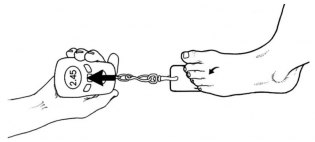
It’s a depressing fact but shortly after age 50, we begin to lose nearly 2 percent of our muscle fibers each year. Muscle fibers remain stable when we are in our 30’s and 40’s and through the next several decades muscle mass declines rapidly. Unfortunately, the reduction in muscle mass is associated with a significant decrease in strength and power. This can lead to disability, falls and reduced lifespan. Age related muscle loss is also associated with the development of osteoarthritis, heart disease, stroke, diabetes, hypertension, cognitive decline and even cancer. In this blog we will discuss the importance of and best type of exercise to slow muscle loss and decrease the risk of falls as we age.
If you have ever lifted weights you make think “I need to do 10-12 repetitions to gain strength”. A fairly typical strength program is to lift a weight that fatigues your muscle after 10-12 repetitions. However, because seniors have experienced muscle loss they are 10 times more likely to injure themselves while lifting heavy weights compared to their younger peers. Luckily, it is possible to build muscle mass using light resistance exercise. Researchers have found that low intensity exercise; such as, doing 60 repetitions with a light weight produces the same gains in muscle volume as completing a high intensity weight training program; such as, lifting 10 repetitions with a heavy weight.
A very encouraging research study looked at men and women aged 70 years or older who participated in a weight training program in which they performed daily strengthening exercises using body weight alone and performed the movements very slowly. At the end of 12 weeks, the participants showed a significant increase in muscle mass and a decrease in hip and waist circumference and reduced abdominal fat. That is amazing! What is also remarkable is that the individuals had no previous experience with weight training and the exercises were all done at home and took less than 15 minutes a day. This just goes to show it is never too late to start an exercise program and even small changes in our daily routine can make a significant difference!
In a typical year, approximately 40% of people over the age of 70 will fall at least once. Each fall significantly increases the risk of sprains, strains and fractures. Sadly, a fall can begin a downward spiral of weakness and frailty. So what can a person do to decrease their risk of falls?
Surprisingly, the single best predictor of a senior citizen falling is toe strength. Research has shown that non-falling seniors had 20% more toe strength than the seniors who fell. Unfortunately, toe weakness is extremely common in senior citizens. In fact, compared to their younger peers, older adults have toe strength declines of more than 35%, which greatly increases a person’s risk of falling.
A large number of falls occur while an individual is leaning forward to grasp an item. When a person leans forward even slightly their toes, especially the big toe, push down into the floor to protect against a forward fall. Strengthening the toes reduces the risk of falling by allowing you to control that subtle lean forward that happens when you go to reach for an object.
Falls also commonly occur when an older person is initiating walking. As a person is taking their first step they will naturally lean forward slightly. Therefore, we all need good toe strength to help with balance and decrease our risk of falling when we take that first step of our walk.
Although, the risk of falling is frightening for many older individuals the good news is that with a simple exercise program people can significantly increase their toe strength and decrease their risk of falling. Increasing big toe strength is easy to achieve. It is common to have a 30% increase in the strength of the big toe within a few months of performing a simple exercise program. This should be a motivating fact for all of us! At Advanced Healthcare & Sports Injury we use a toe strength dynamometer to precisely measure the strength beneath the big toe and lesser toes before and after an individualized treatment and exercise program. Because of the proven connection between toe weakness and falls in the elderly, strengthening the toes should be a part of every senior’s daily exercise routine!
*images and information courtesy of Dr. Tom Michaud and humanlocomotion.com

